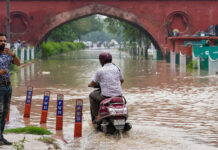New York: As sexting on smartphones become all-pervasive, parents and teachers need to move beyond fear-based education and rather prepare teenagers about “safe” sexting, says a study led by an Indian-American researcher. Preaching sexual abstinence to youth was popular for a number of decades, but research repeatedly found that such educational messages fell short in their intended goals.
Since the advent of photo and video-sharing via smartphones, children have received similar fear-based messages to discourage ‘sexting’. Unfortunately, messages of sexting abstinence don’t seem to be reducing the prevalence of adolescents sharing nudes, said the team from Florida Atlantic University.
“The truth is that adolescents have always experimented with their sexuality, and some are now doing so via sexting,” said Sameer Hinduja, study co-author and a professor in the School of Criminology and Criminal Justice within FAU’s College for Design and Social Inquiry.
Hinduja and co-author Justin Patchin, professor of criminal justice at the University of Wisconsin-Eau Claire acknowledged that although participating in sexting is never 100 per cent “safe” (just like engaging in sex), empowering youth with strategies to reduce possible resultant harm seems prudent. They have proposed some specific, actionable messages that adults can share with adolescents after weighing their developmental and sexual maturity.
If someone sends you a ‘sext’, do not send it to — or show — anyone else. This could be considered nonconsensual sharing of pornography. “If you send someone a sext, make sure you know and fully trust the and do not send images to someone who you are not certain would like to see it.”
“Consider boudoir pictures. Boudoir is a genre of photography that involves suggestion rather than explicitness. Instead of nudes, send photos that strategically cover the most private of private parts. They can still be intimate and flirty but lack the obvious nudity that could get you in trouble,” said the researchers.
Never include your face so that images are not immediately identifiable as yours but also because certain social media sites have sophisticated facial recognition algorithms that automatically tag you in any pictures you would want to stay private.
“Make sure the images do not include tattoos, birthmarks, scars, or other features that could connect them to you. In addition, remove all jewellery before sharing,” suggested the team.
Turn your device’s location services off for all of your social media apps, make sure your photos are not automatically tagged with your location or username, and delete any meta-data digitally attached to the image.
“If you are being pressured or threatened to send nude photos, collect evidence when possible. Having digital evidence (such as screenshots of text messages) of any maliciousness or threats of sextortion will help law enforcement in their investigation and prosecution,” Hinduja elaborated. Use apps that provide the capability for sent images to be automatically and securely deleted after a certain amount of time.
















































